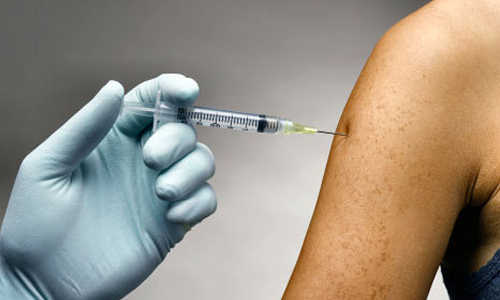According to a multinational clinical trial involving nearly 20,000 young women, the human papilloma virus vaccine, Cervarix, not only has the potential to prevent cervical cancer, but was effective against other common cancer-causing human papillomaviruses, aside from just the two HPV types, 16 and 18, which are responsible for about 70 percent of all cases. That effectiveness endured for the study’s entire follow-up, of up to four years. The research was published February 4 in Clinical and Vaccine Immunology, a journal of the American Society for Microbiology.
“The study confirms that targeting young adolescent girls before sexual debut for prophylactic HPV vaccination has a substantial impact on the incidence of high grade cervical abnormalities,” said corresponding author, Dan Apter, Director, The Sexual Health Clinic, Family Federation of Finland, Helsinki.
The vaccine was extremely effective in young women who had never been infected with HPV. It protected nearly all from HPV-16 and -18, and protected 50-100 percent against different grades of precancerous transformation of cervical cells caused by other strains of HPV, including up to 100 percent of those with the immediate precursor grade to cancer. The women were followed for up to four years post-vaccination.
The vaccine was distinctly more effective among ages 15-17 than ages18-25, underscoring the value of vaccinating young adolescents, said Apter. The lower efficacy in the oldest age group may result from a larger proportion of women in that age group having had persistent infections at the time of vaccination, he said.
The study is the final report from the Papilloma Trial Against Cancer in Young Adults (PATRICIA), a multinational clinical trial encompassing 14 countries in Europe, the Asia-Pacific region, North America, and Latin America, and it confirms previous reports in this trial. The over-all trial constituted the basis for approval of the Cervarix vaccine in Europe and the United States.
While the trial did not investigate the vaccine’s efficacy in males, sexually transmitted HPV causes anogenital and head and neck cancers in both males and females. HPV-related head and neck cancers now number around 8,400 in the US, annually. “The more adolescents are vaccinated, the closer we will be to eradicating high risk HPV viruses,” said Apter. “So I think boys should also be vaccinated.”
“Cervical cancer is the fourth most common cancer among women, with estimates from 2012 indicating that there are 528,000 new cases and 266,000 deaths each year worldwide, with the majority of cases occurring in developing countries,” said Apter. In the US, about 12,000 new cases, and 4,000 deaths occur annually, according to the SEER database of the National Cancer Institute. “It is now established that having a persistent infection with HPV is a necessary cause of cervical cancer,” said Apter.
Story Source:
The above story is based on materials provided by American Society for Microbiology.
Photo Credit: womenshealthmag





